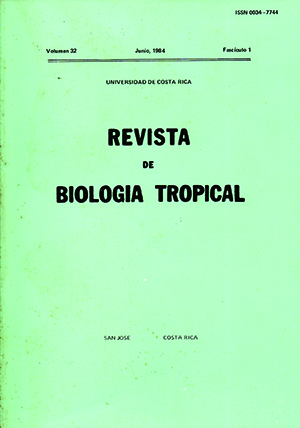Resumen
Manicores rufipes ha sido reportado alimentándose de abejas del género Trigona en el bosque costero cerca de Belém, Pará, Brasil. Otro chinche no identificado del género Apiomerus también fue observado alimentándose de termites en el bosque de tierra firme de Manaus, Amazonas. Ambos Apiomerinae utilizan material adhesivo de fuentes diferentes en las tibias de sus patas delanteras para atrapar su presa.Citas
China, W. E. 1932. Reduviid bugs (Apiomerinae) capturing their insect prey by means of adhesive resin-covered fore-legs. Proc. Ent. Soc. Lond., 7: 12.
Haviland, M.D. 1931. The reduviidae of Kartabo Bartica District, British Guiana Zoologia, 7: 145.
Lovejoy, T. E. 1975. Bird diversity and abundance in Amazon forest communities. Living Bird, 13: 127-191.
McMahan, E.A. 1982. Tool use by an assasin bug in capturing termites, p. 290. In M.D. Breed, C. D. Michener, & H. E. Evans (eds.). The Biology of Social Insects. Westview Press, Boulder Colorado.
McMahan, E. A. 1983. Bugs angle for termites. Natural History, 5: 40-47.
Miller, N. C. E. 1971. The Biology of the Heteroptemo Clasey, Hampton, 206 p.
Roepke, W. 1932. Miscellanea Zoologica Sumatrana, 68: 1-5.
Schwarz, H.F. 1948. Stingless bees (Meliponidae) of the Western Hemisphere. Bull. Amer. Mus. Nat. Hist., 90: 1-546.
Tillyard, R. J. 1926. The insects of Australia and New Zealand. Angus & Robertson, Australia, 560 p.
Usinger, R.L. 1958. Harzwanzen or 'resin bugs' in Thailand. Pan-Pac. Ent., 34: 52.
Uyttenboogaart, D. L. 1902. Tijdschr. Ent., 45: 36-37.
Wille, A., & C. D. Michener 1973. The nest architecture of stingless bees with special reference to those of Costa Rica (Hymenoptera: Apidae). Rev. Biol. Trop. 21 (Supl. 1) 278 p.
##plugins.facebook.comentarios##

Esta obra está bajo una licencia internacional Creative Commons Atribución 4.0.
Derechos de autor 1984 Revista de Biología Tropical


